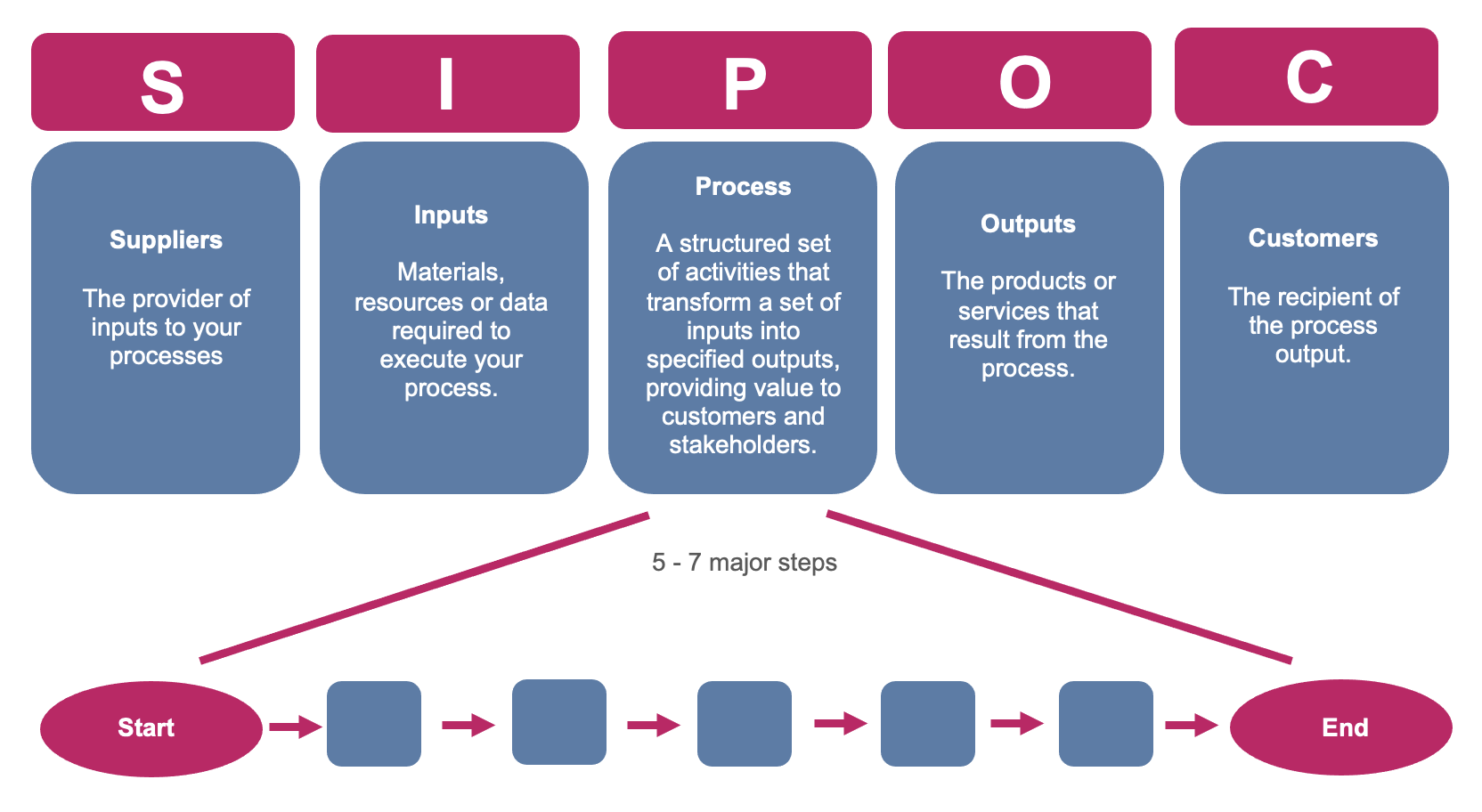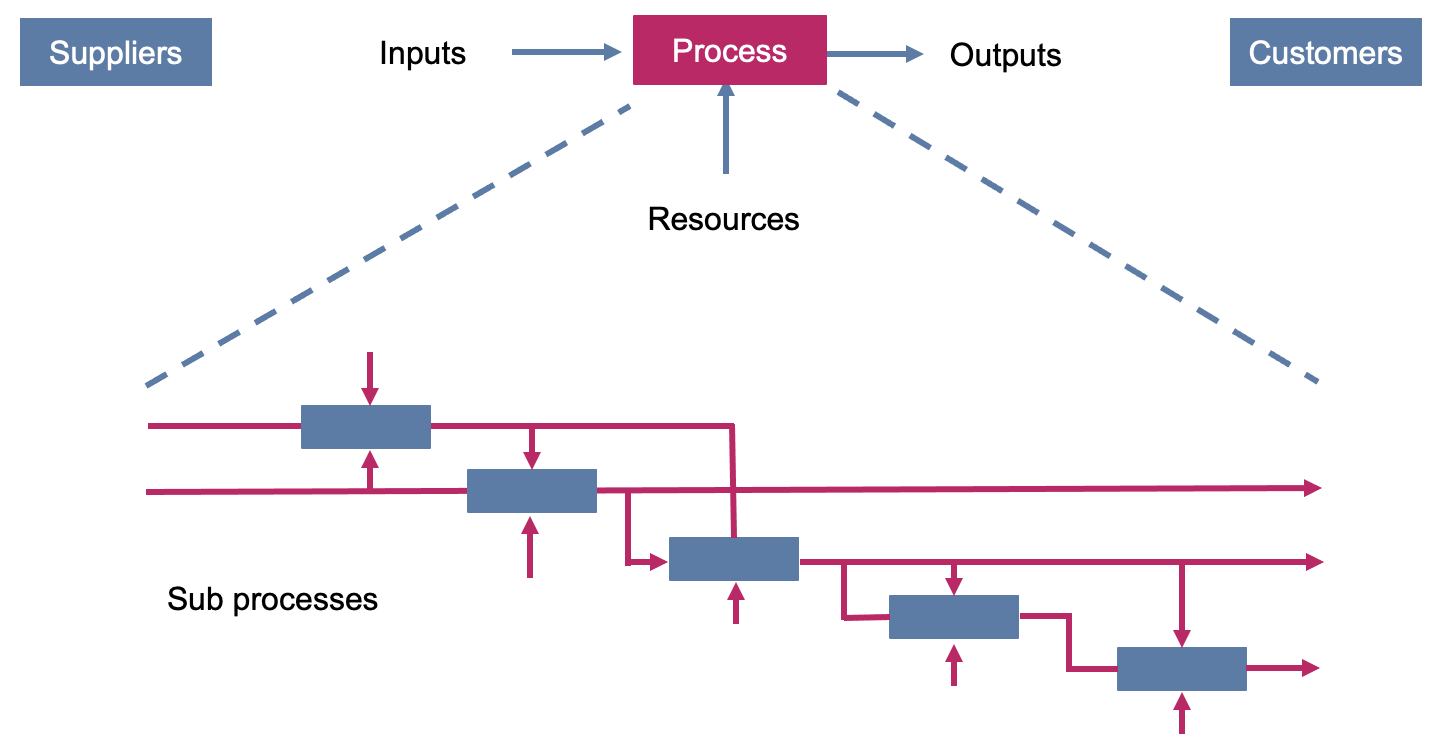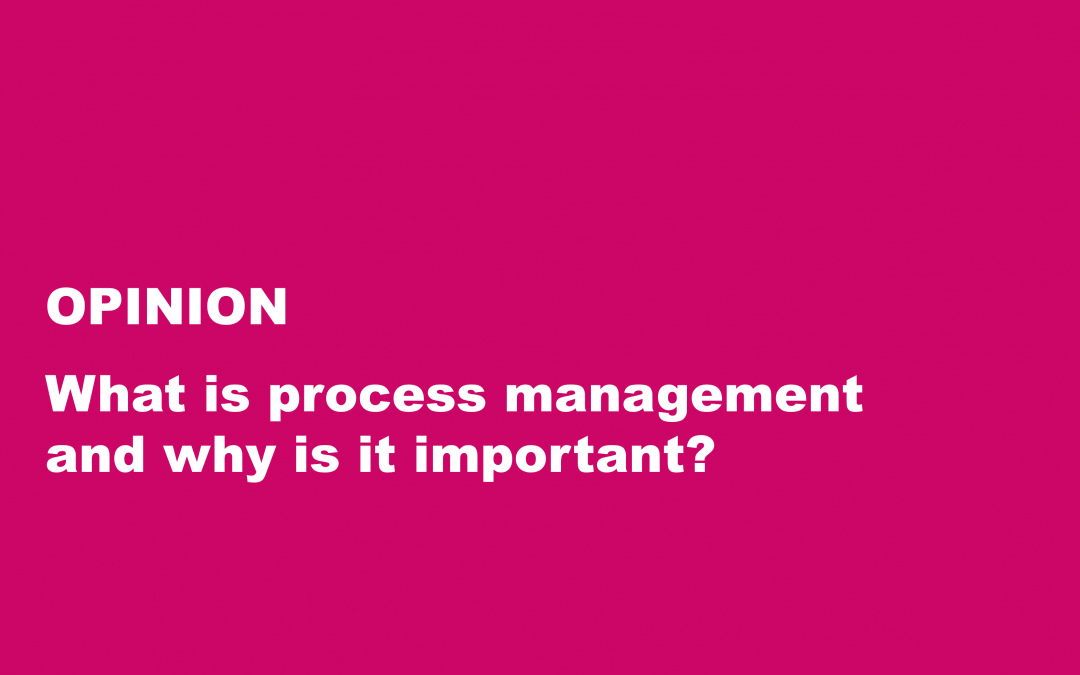In his latest post, Programme Lead, Chris Smith PCQI asks what is process management and why is it important? He guides you through the process of using Business Process Management (BPM) in order to improve communication and collaboration and achieve a unified process for improvement, which will result in your organisation more effectively and efficiently achieving its goals.
1: WHAT IS A PROCESS?
Everything we do is a process; whether we are concerned with manufacturing satellite parts or producing a publication. Consequently, we need to learn how to design, manage and improve processes so that they do what we (and the customers) want them to do over and over again.
A process is simply something that converts a set of inputs into outputs. The inputs can include materials or information and are supplied into the process externally or internally. The outputs of a process go to a customer, again external or internal. This simple explanation may be represented as the flow of:
supplier –> inputs –> process –> outputs –> customer
otherwise known as SIPOC.
Any substantial process may be broken down into its main steps or sub-processes, all of which have the same SIPOC flow diagram below:

2: PROCESSES AND FUNCTIONS
In the design of many organisations, top management has seen the need to establish functions – groups of specialists in areas such as marketing, finance, research, production or operations and HR. This is reasonable because, for example, in the financial area we need the experts to work together to ensure we can properly raise the finance to run the business. In HR too, experts in employment law, recruitment, training and development come together to make sure we have good policies that help us to properly manage our people.
However, as the customer of an organisation, we are more likely to be interested in outputs from its processes, such as delivery of an item on time, the right component being assembled or the opening of a supplier account correctly. We don’t usually care how the company or supplier is structured functionally; just how well it meets our needs.
3: EXPERIENCING PROCESSES
If you order a new printer to go with your computer from a market leader, you are likely to experience some of the company’s core business processes straight away:
- design products process – you may be attracted by the printer’s features
- generate orders process – you may respond to an advertisement
- fulfil orders process – you may call into a retailer or order online and have the product delivered
If you use the printer for a while, you will no doubt experience the company’s ‘supply parts and services’ process (such as ordering a new printer cartridge, for example).
The chances are that, if the company is excellent at the design, management and continual improvement of these ‘end-to-end’ processes, you will be delighted with the service you receive from them. Customers effectively take a walk through these processes, none of which sit in one department because they cut across functions.
4: WHAT IS BUSINESS PROCESS MANAGEMENT (BPM)?
This is essentially the concept detailing how organisations design, understand, manage and improve their processes. While it begins with the SIPOC flow, there will also be controls on the processes that come from legislation, company policies and so on. The processes will require resources for them to run, such as skills, equipment and so on. A key point is that resources are not converted by the process – they are used by it.
Inputs, controls, outputs, resources (ICOR) modelling can be used to help understand, design, operate and generally improve processes. ICOR is a box-based diagrammatical approach to showing process inputs (on the left side), controls (on top), outputs (on the right side) and resources (at the bottom). Sub-processes and how they connect can be shown in ICOR modelling by:
- identifying the key steps within the process, linking them together and showing the relationships between inputs, outputs and controls
- checking that all inputs are processed and all outputs are produced
- repeating the breakdown of each process step to achieve the level of detail required
See example ICOR Diagram below:

Other techniques which can help to improve processes are chevron diagrams of the major steps in process, flow charts and diagrams of processes. They allow people who manage and work in and on the processes to create a vision of the way they want things to be done. They also allow these people to help in the operation of the processes, including training. This can all be usefully documented in a quality management system.
Once an organisation has defined and mapped out the core processes, people need to develop the skills to understand how the process structure will be analysed and made to work, eg the core processes will need breaking down into sub-processes, activities and tasks.
5: PROCESS OWNERSHIP
The people who know most about the practical running of a process are those who work in and on it every day. They experience the problems of resourcing and supplying the process, the issues with handling the outputs, and lack of information. They can provide valuable information but they can also be part of the problem, of course, as they become too close to the detail.
Many processes cross the functional boundaries so often there is no one who has overall responsibility for them. Consequently, each high level or core process needs a named individual with sufficient authority and enthusiasm to champion improvements and optimisation. It is essential that the sponsor or owner takes a view of the whole process and is not perceived to be biased towards a particular function.
6: PROCESS MEASUREMENT
Key to process management and improvement is the measurement of the performance of the process. This may be expressed both in qualitative and in quantitative terms and should be compared with the required level of performance. The set of measurements should include internal, output and satisfaction measures.
Internal measures relate to what is happening within the process and usually cover things like cycle time or the amount of resources used. Output measures relate to the outputs of the process. Satisfaction measures relate to the customer’s view of the process. Process measures should address the simple performance trio of: on-quality, on-time and on-cost.
Having decided what to measure, these questions need to be answered:
- what is the measure about? (an operational definition)
- how will we gather the data?
- how often will we gather the data?
- how often will we report and review the data?
- how will we present the results?
- what is the current level of performance?
- what is our targeted level of performance?
Having meaningful measurements in place will help the management of the processes, the identification of which processes are operating efficiently and are satisfying their customers, and when the performance of a process is not acceptable. In the latter case you need to determine if the performance is consistently unacceptable or if the performance is variable. This will help you to identify appropriate corrective action.
7: PROCESS IMPROVEMENT
Process improvement projects can be run in two ways. The first is an incremental, continuous basis and the second is for step change or breakthrough improvements. The latter is associated with business process re-engineering (where processes need fundamental redesign) often in conjunction with the implementation of new technology or IT systems.
In the process performance triangle (quality, time, cost), failure to deliver on time is usually associated with time being wasted. The avoidance of this type of waste means getting rid of the non-value adding activities that we spend time on. The collective approaches referred to as ‘lean’ address this problem head-on. They use simple tools and techniques to improve flow and strip out as much of the non-value adding activities as possible. Failure to deliver on-quality is often associated with high levels of variability and poor process capability compared with the requirements, (perhaps in the form of a specification).
The avoidance of this variation means constantly examining and reducing the variation until we have highly capable processes. The collective approaches referred to as ‘six sigma’ address this problem and lead to greater consistency. This in turn brings the key to customer delight – meeting their requirements again and again. Eliminating waste and unnecessary variation reduces costs, hence the performance triangle is complete without resorting overtly to cost-cutting regimes.
Chris Smith, PCQI
Programme Lead, rove.
If you’re interested in studying one of our CQI and IRCA Quality Management courses, you can find out more here.

